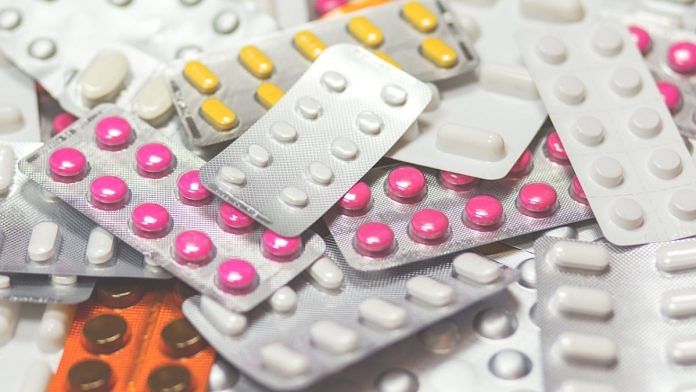New Delhi: A new report by a network of multinational pharma companies and a leading consulting firm has said that the Indian pharmaceutical market should aim to achieve a size of US$130 billion by 2030 and US$450 billion by 2047.
India’s pharmaceutical market, as of now, stands at about $50 billion.
The report by the Organisation of Pharmaceutical Producers of India (OPPI) and Ernst & Young was released during the OPPI’s annual summit Thursday.
It said that this growth trajectory could be propelled by expansion in the domestic market, spurred by the country’s economic growth and the enhanced adoption of healthcare services.
This growth, the report said, will also be largely influenced by government initiatives like Ayushman Bharat and the Ayushman Bharat Digital Mission, and the industry’s strategic pivot toward innovation of next-generation therapeutics, resulting in an increase in global exports, research and development focus.
At the same time, the report stressed, the per person disease burden, measured as the DALY rate (Disability Adjusted Life Years lost per 100,000 population) — which currently stands at 36,000 — should also come down to 10,000.
It said that India’s out-of-pocket expenditure as a percentage of total health expenditure, — currently about 47 percent — should come down to 10 percent by 2047.
“While the focus for the Indian pharma industry is now the transition from volume-based to value-based healthcare, our commitment is also to ensure that access to quality healthcare and therapies should be ensured for every Indian citizen,” OPPI president Suresh Pattathil told ThePrint.
Shifting target
Traditionally, Indian pharma companies have focused on generic drugs dominating the global generics market — the industry represents over 20 percent of the global generics supply by volume and caters to approximately 60 percent of the global demand for vaccines.
But, according to the report, some companies have ventured into complex generics, biosimilars, new chemical and biological entities.
As the competition and pricing challenges in the generics market continue to grow, several Indian companies have started venturing into the less crowded complex generics space, it said.
The report also highlighted that biosimilars — generic equivalents of biologic drugs, a new class of medicines that include protein and antibiotics and are more complex than small-molecule drugs — are also increasingly becoming a focal point for India.
With nearly 98 biosimilars approved in the country, India holds the highest number of domestic biosimilar approvals across all regions. “However, only a handful of Indian companies have managed to successfully enter the US and Europe,” the report said.
While, globally, the pharma industry is moving swiftly toward next-generation therapies, such as cell and gene therapies, antibody-drug conjugates and DNA or RNA therapies, the report said that with its first CAR-T therapy approved by the Indian drug regulator last month and the next one in the pipeline, India was already moving in the right direction — the need was now to increase the pace and scale of these endeavours.
In October, the Drugs Controller General of India (DCGI) had issued market authorisation to NexCAR19, a CAR-T (Chimeric Antigen Receptor-T) cell therapy — a breakthrough treatment for some types of cancers and developed by IIT Bombay’s spin-off company ImmunoACT.
The report, however, has also emphasised the need for Indian companies to pay adequate attention to quality issues.
“As Indian companies continue to expand their geographical footprint and their capabilities outside simple generics, it is essential that quality and compliance are embedded in the overall growth strategy,” it said.
While the large number of manufacturers was a strength for the Indian pharma industry, it also posed a few challenges. According to the report, the country has a huge network of around 3,000 drug companies and about 10,500 manufacturing units.
(Edited by Tikli Basu)
Also read:



